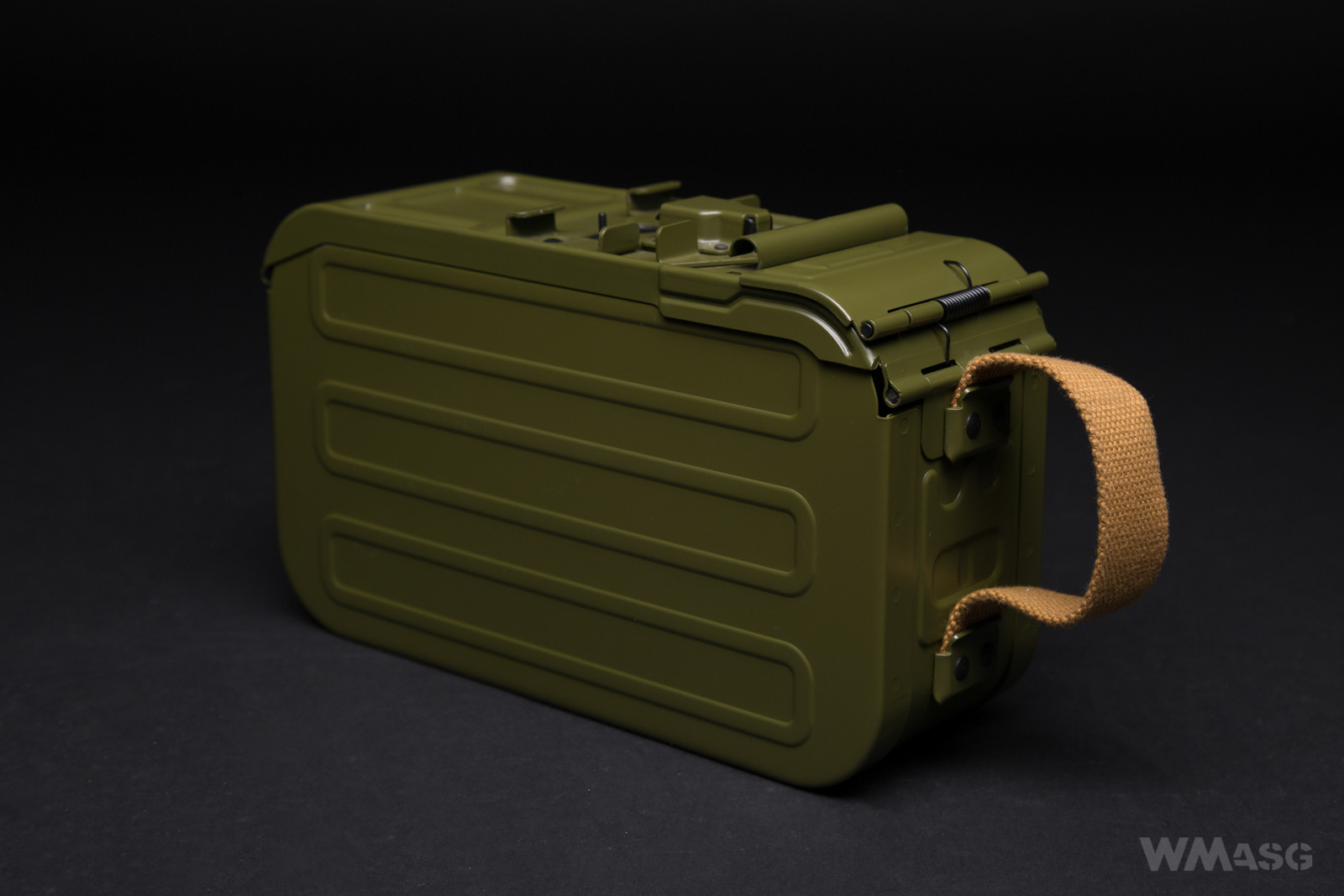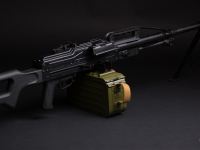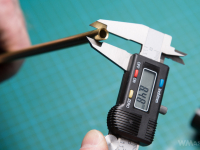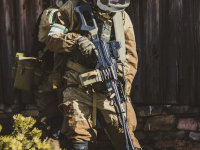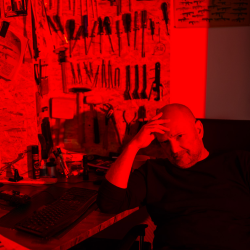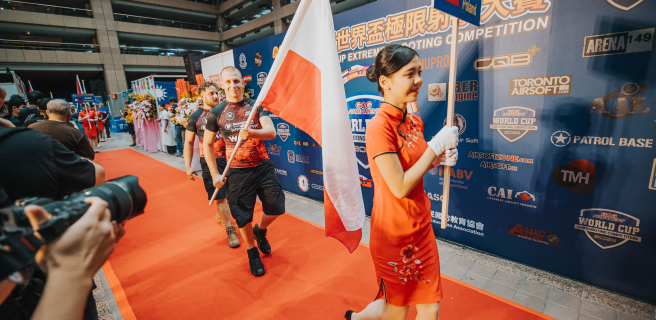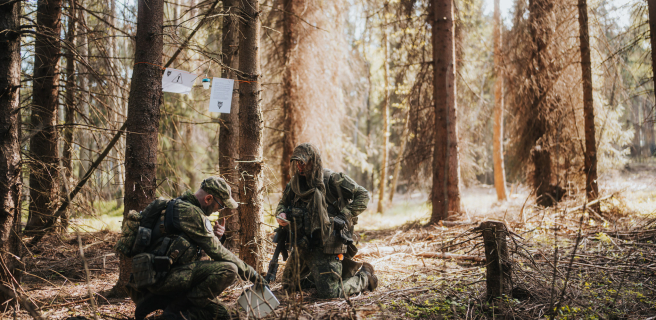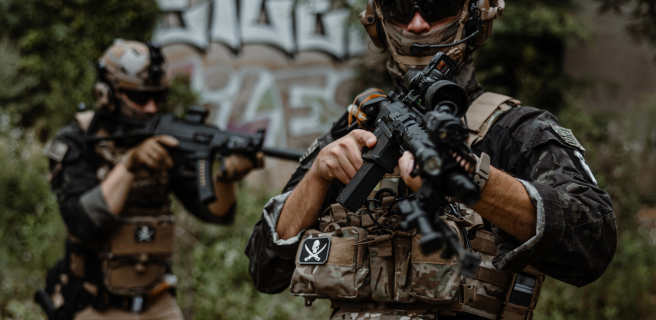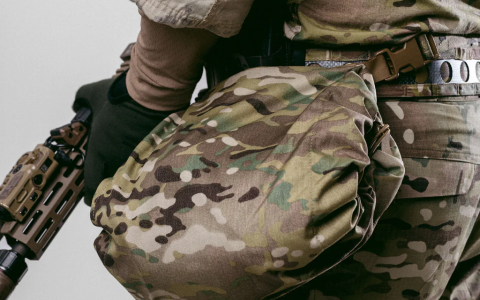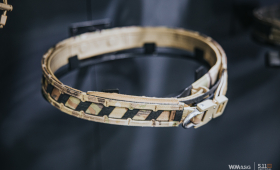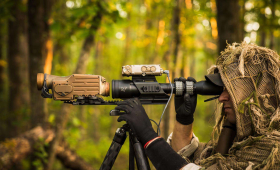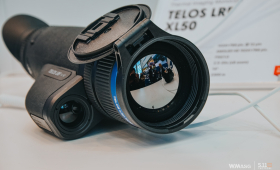The ammunition box
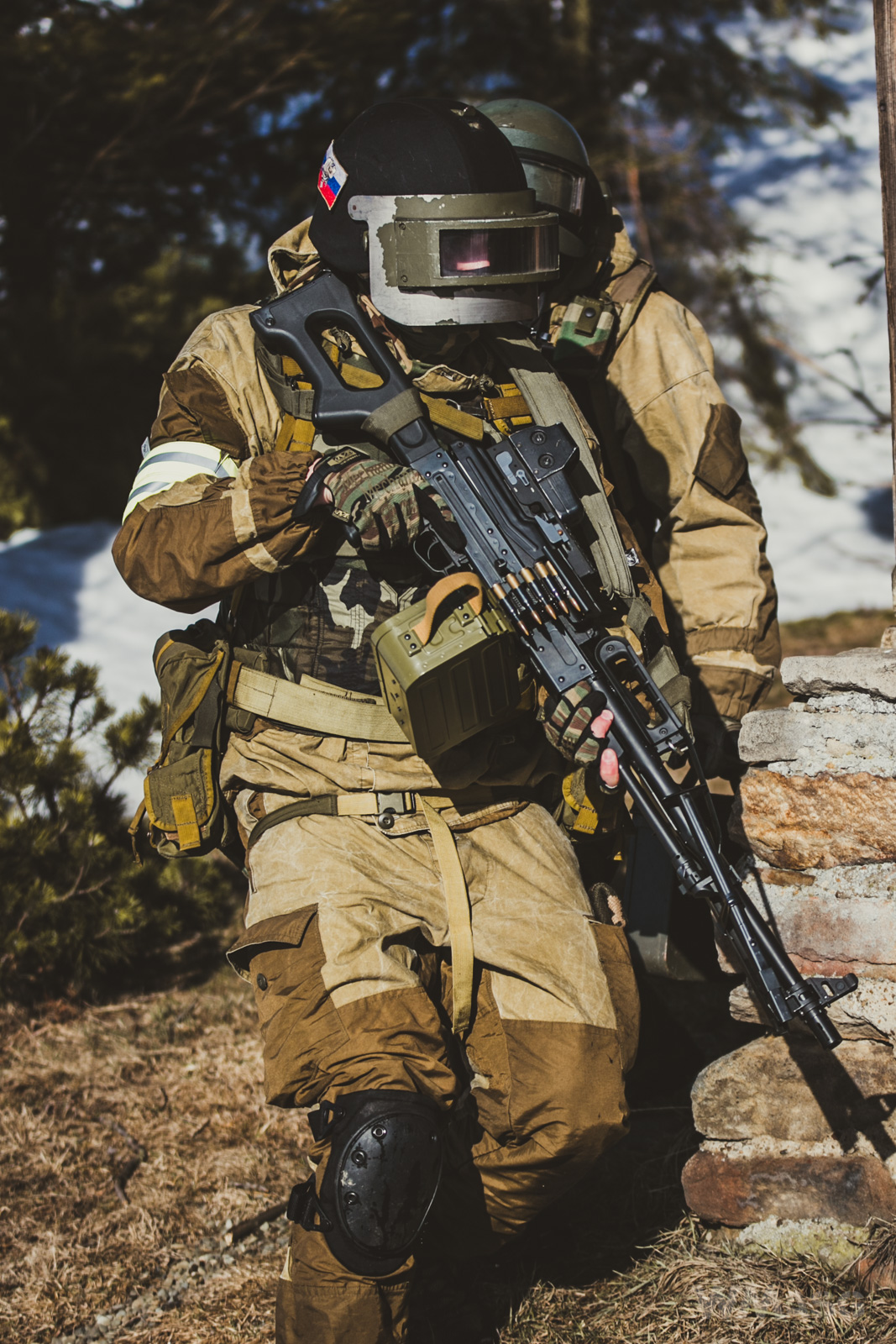
The box is made perfectly. The material is a varnished steel sheet, steel rivets and a piece of woven tape. Inside there is an electrically operated mechanism activated by a button located on the bottom.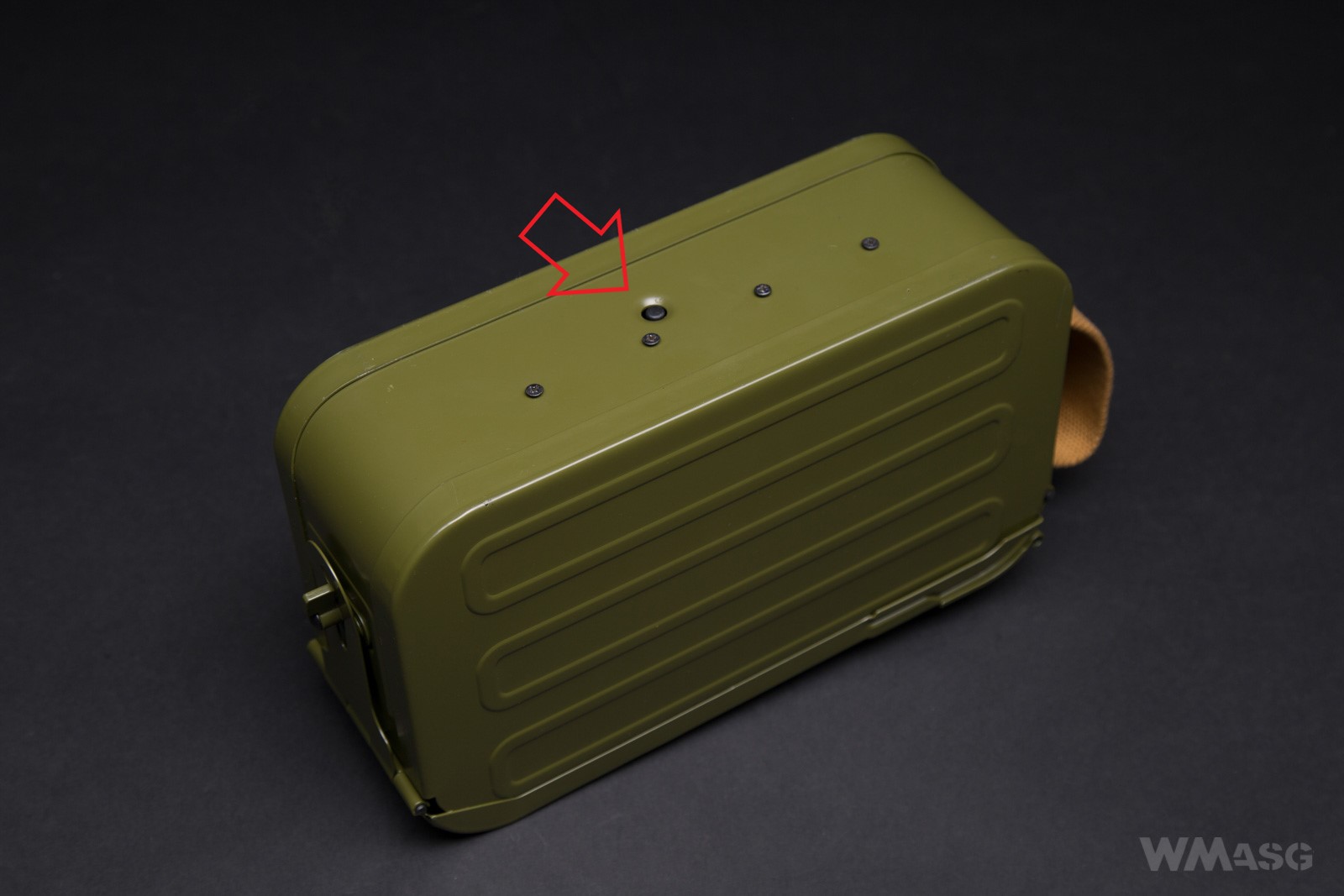
The button is monostable, that is, the mechanism works as long as we keep the button pressed. The design, however, is similar to that of a typical hi-cap magazine, that is, an electrically-wound strip spring, by unwinding, feeds some number of BBs to the replica. In other words, you do not have to keep the button pressed all the time. However, if I would be a user of a similar magazine, I would be tempted to make an external button on the long cord.
I mentioned earlier that the magazine has room for two batteries - the first one powering the replica and the second one powering the magazine itself. We place them inside, after turning the knob
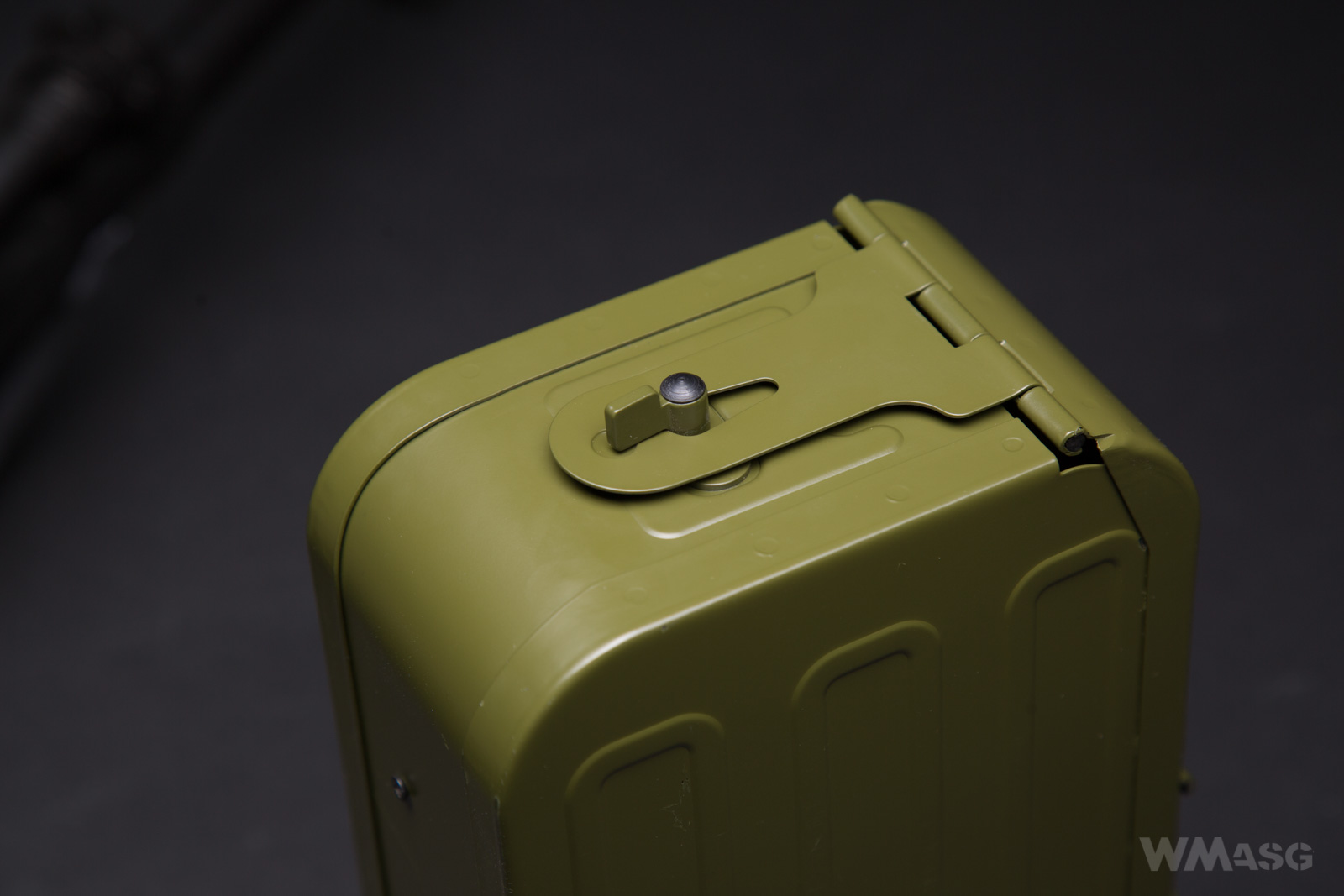
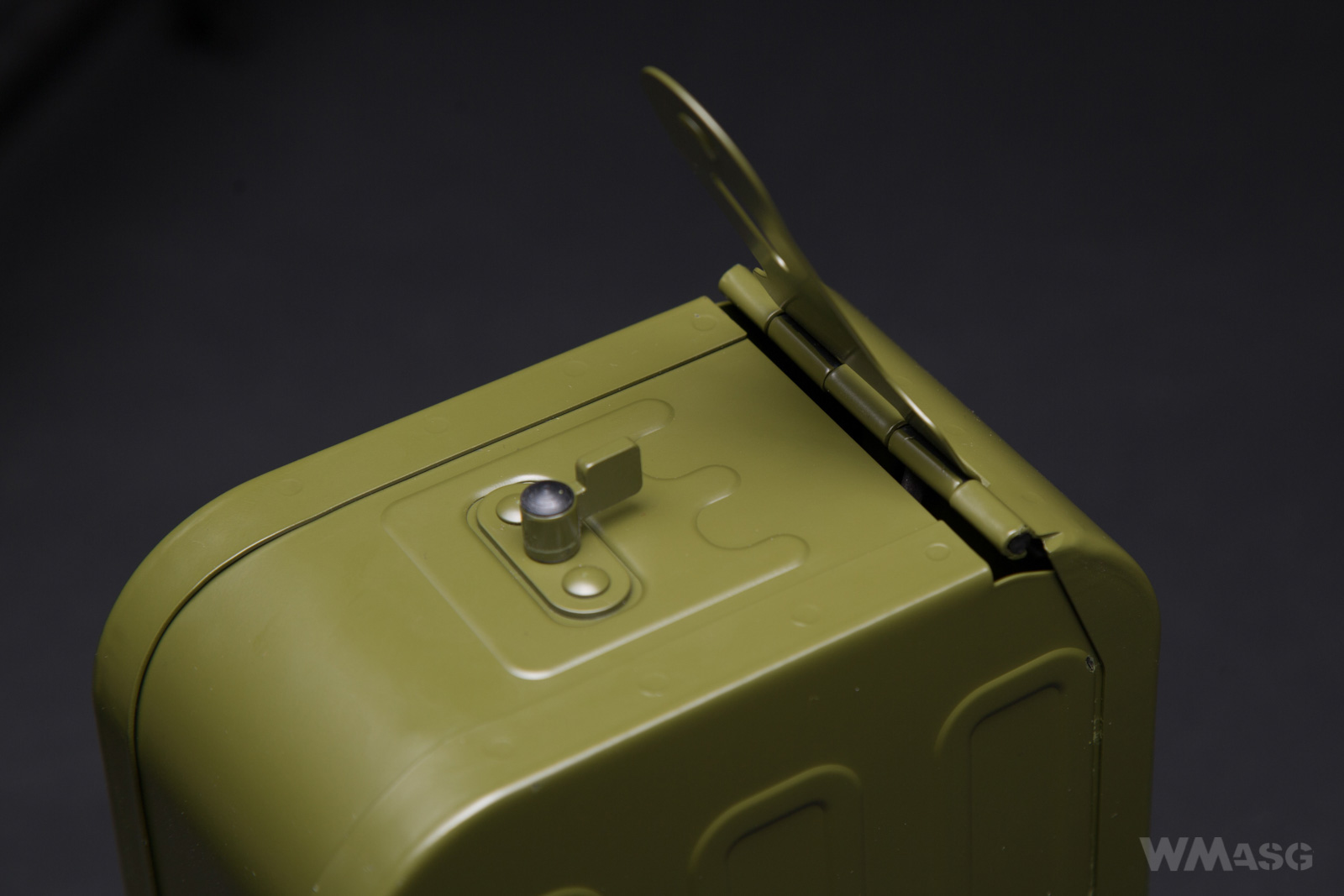 and lifting the top cover.
and lifting the top cover.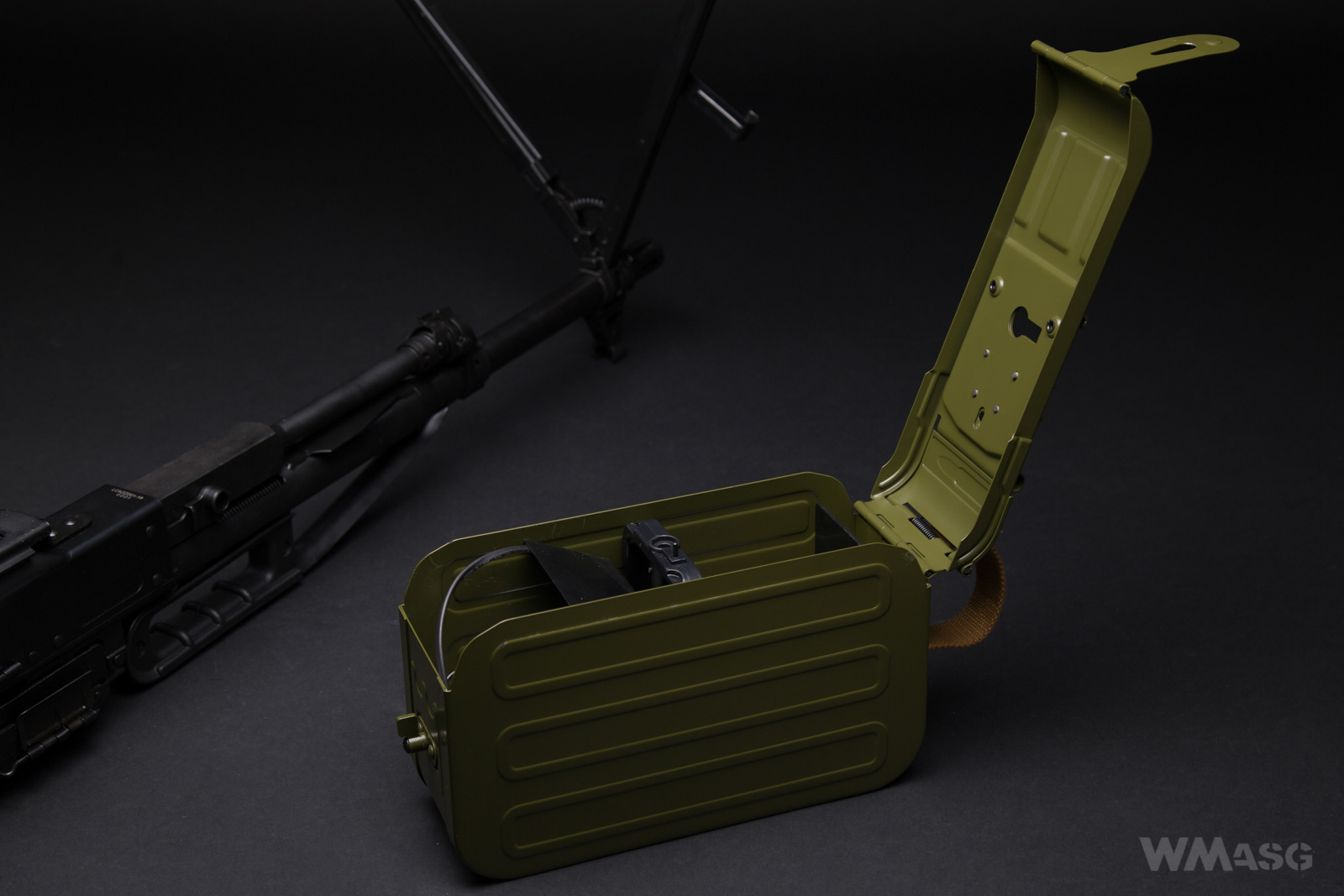
The described replica worked without any problems on the LiPo 11.1V 2200 mAh battery. On the other hand, the magazine was powered by a small LiPo 7.4V 1000 mAh battery. The batteries should be placed on the left side, the right one should be on the BBs. Unfortunately, the amount of available space is not so great.
The BBs can be refilled without detaching the magazine from the mounting point the replica. A smaller flap equipped with a pressure spring serves this purpose.
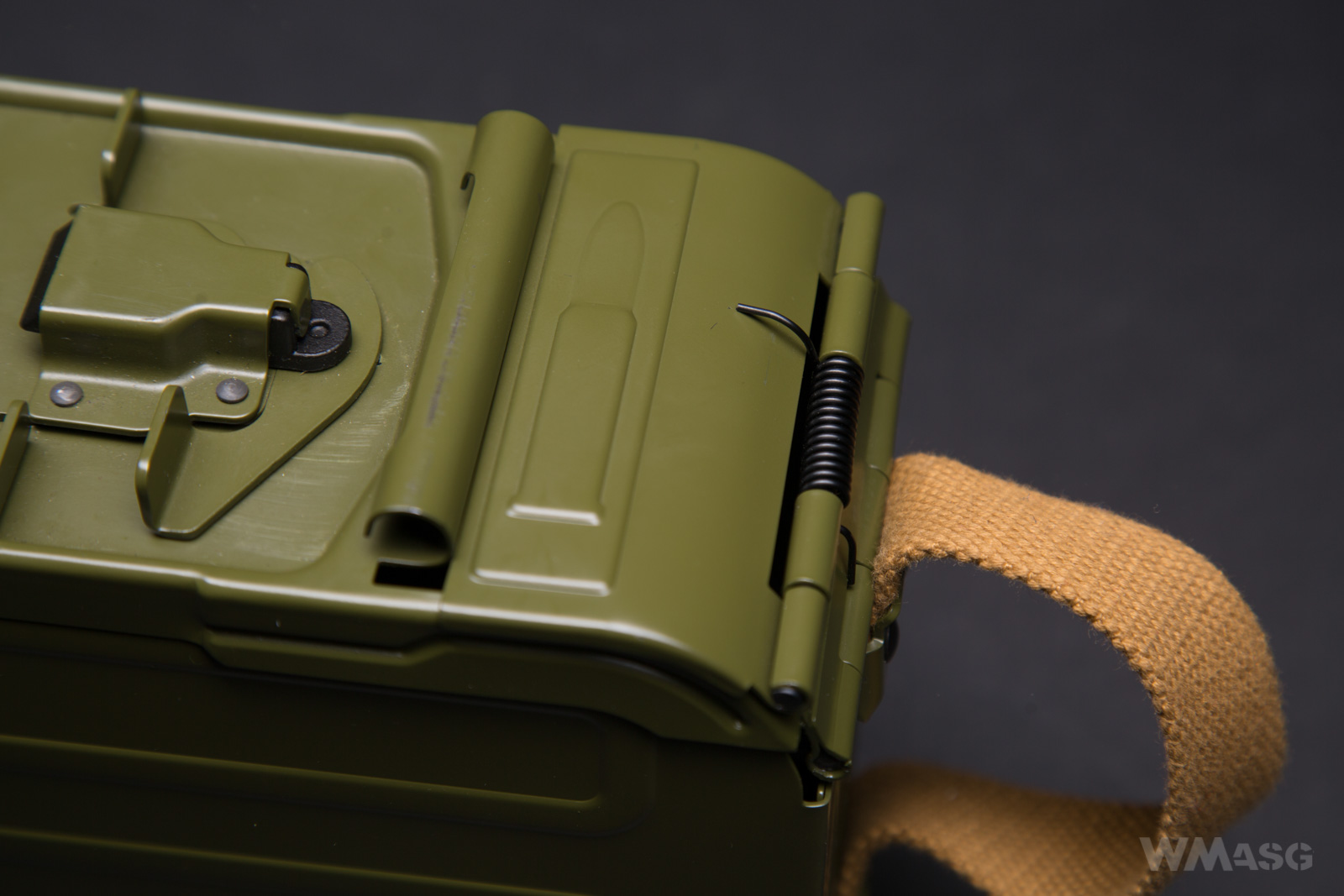
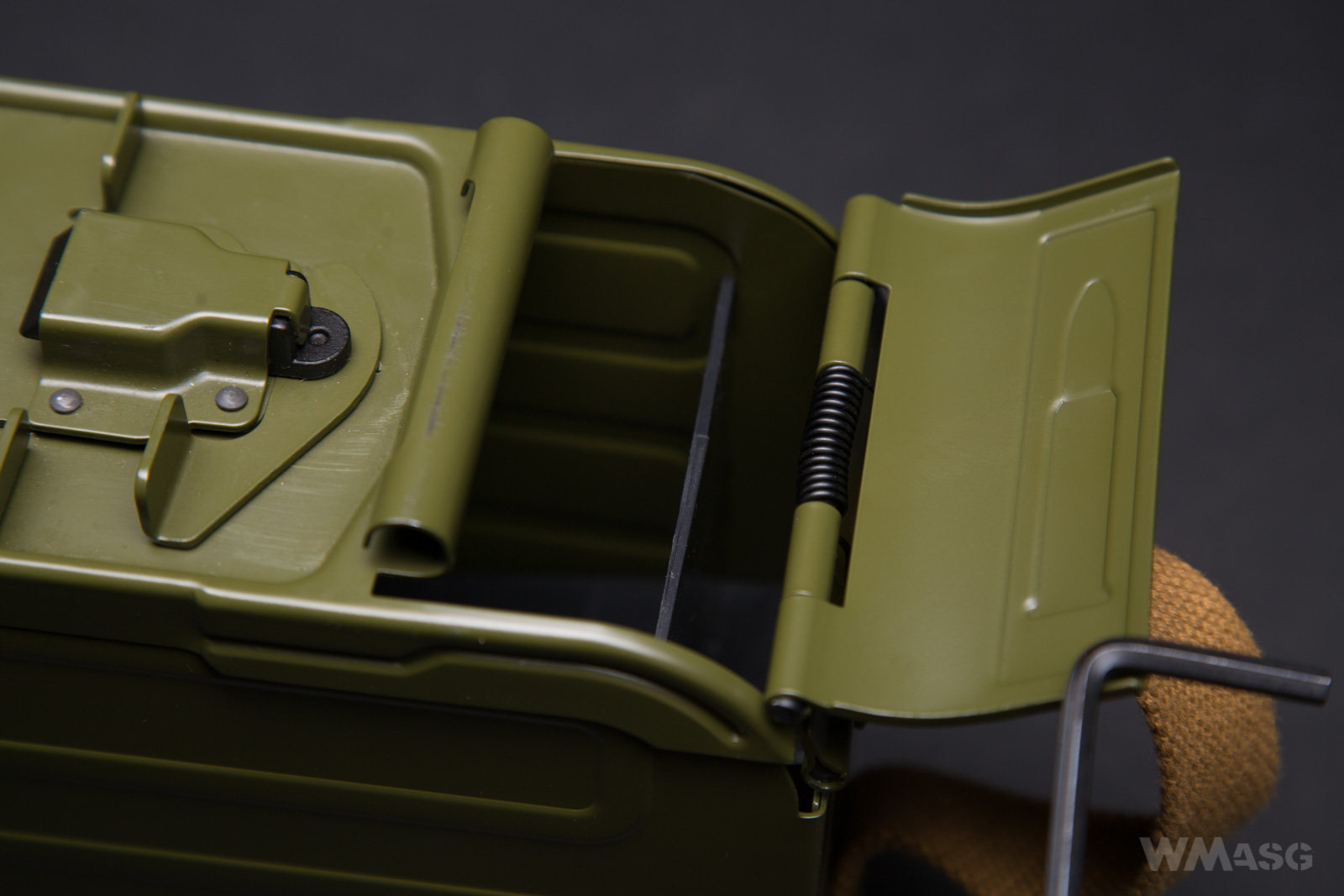
Magazine view from above.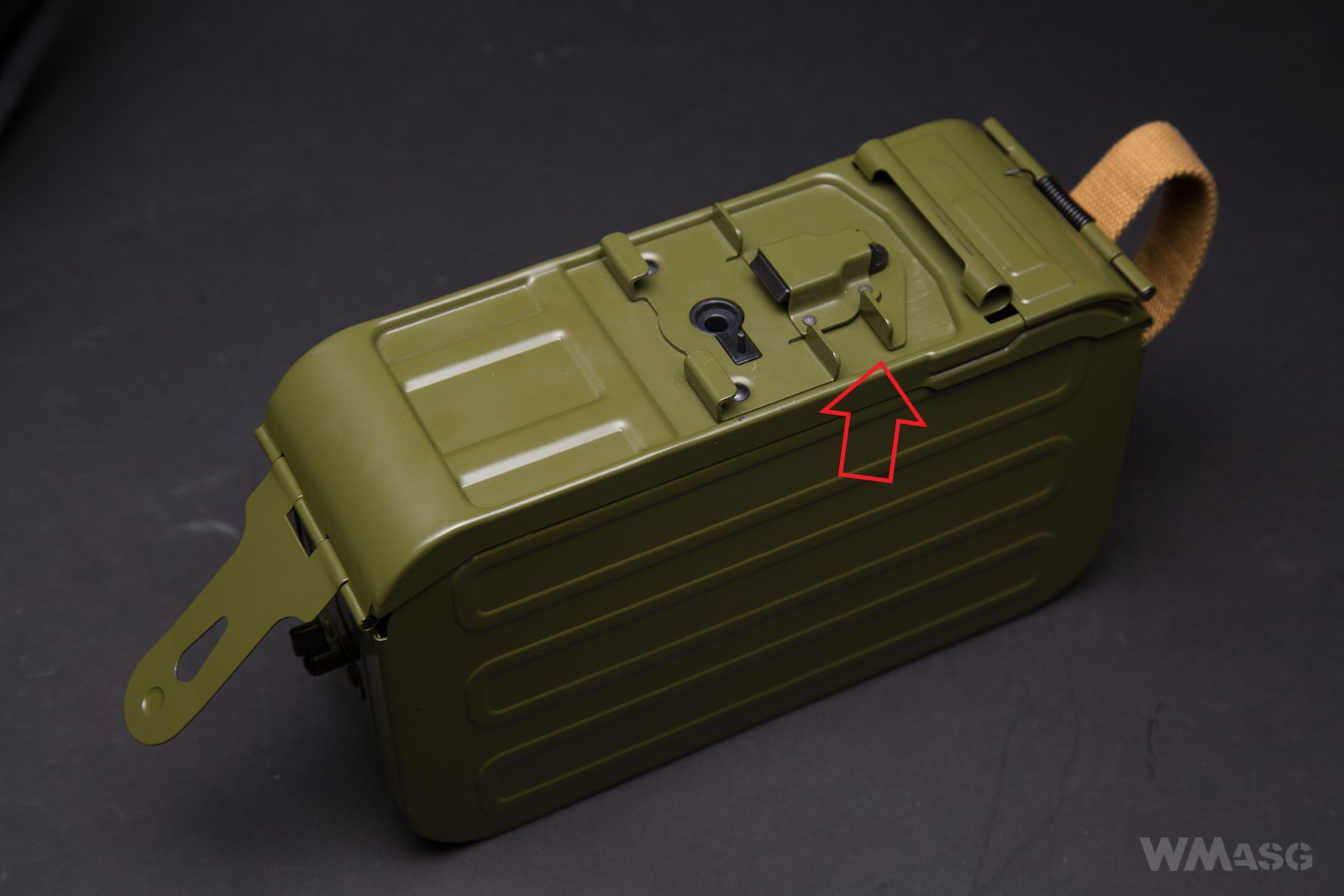
The woven tape is always on the right side of the replica. When attaching the magazine, start mounting in from the left side of the mounting point. Only then we slightly push in the right side. So that the black latch next to the BB feeding hole clicks into place. To detach the magazine, move the lever on the magazine towards the woven tape.
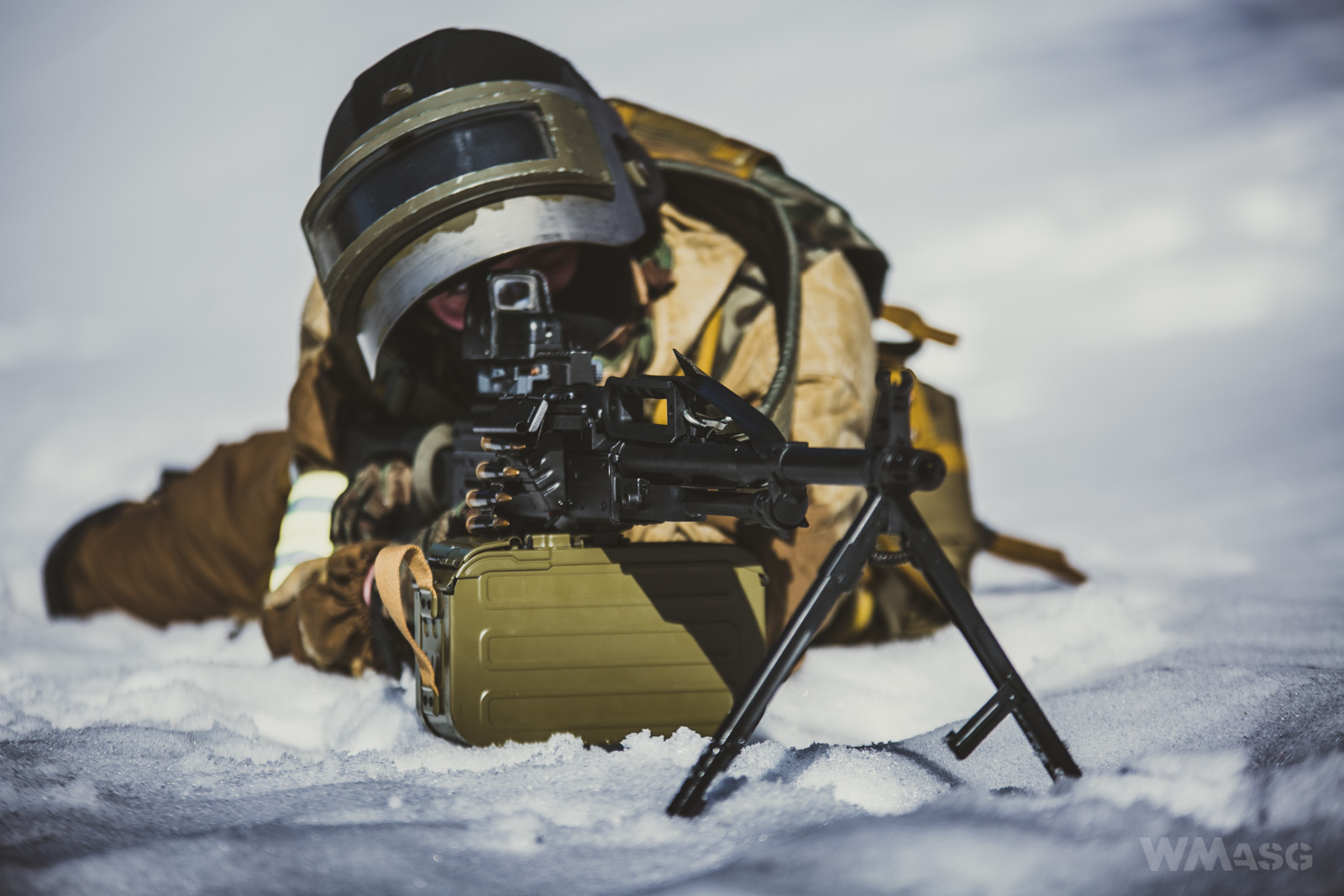
Muzzle velocity test
The test was carried out on our own enclosed shooting range, at an ambient temperature of 23oC, the Hop-Up was set to zero. The measurements were made with the XCORTECH X3500 chronograph using Open Blaster 0.2 g BBs.
Results of the test:
1. 435.1
2. 439.4
3. 440.6
4,434.6
5. 435.1
6. 437.4
7,461.1
8. 437.0
9. 434.9
10,445.9
Average: 436.51 fps.
Measured ROF (LiPo 11.1 V 2400 mAh, 15 C battery): 15 BBs/s
Target shooting test
For the test we use Nurpol 0.25 g. bio-degradable BBs. The range to the target was 25 m.
One series of shots was fired from a replica supported on an integrated bipod and the shoulder rest. We did not adjust the aiming devices.
All shots hit the target. The largest distance between bullet holes - 7 cm.
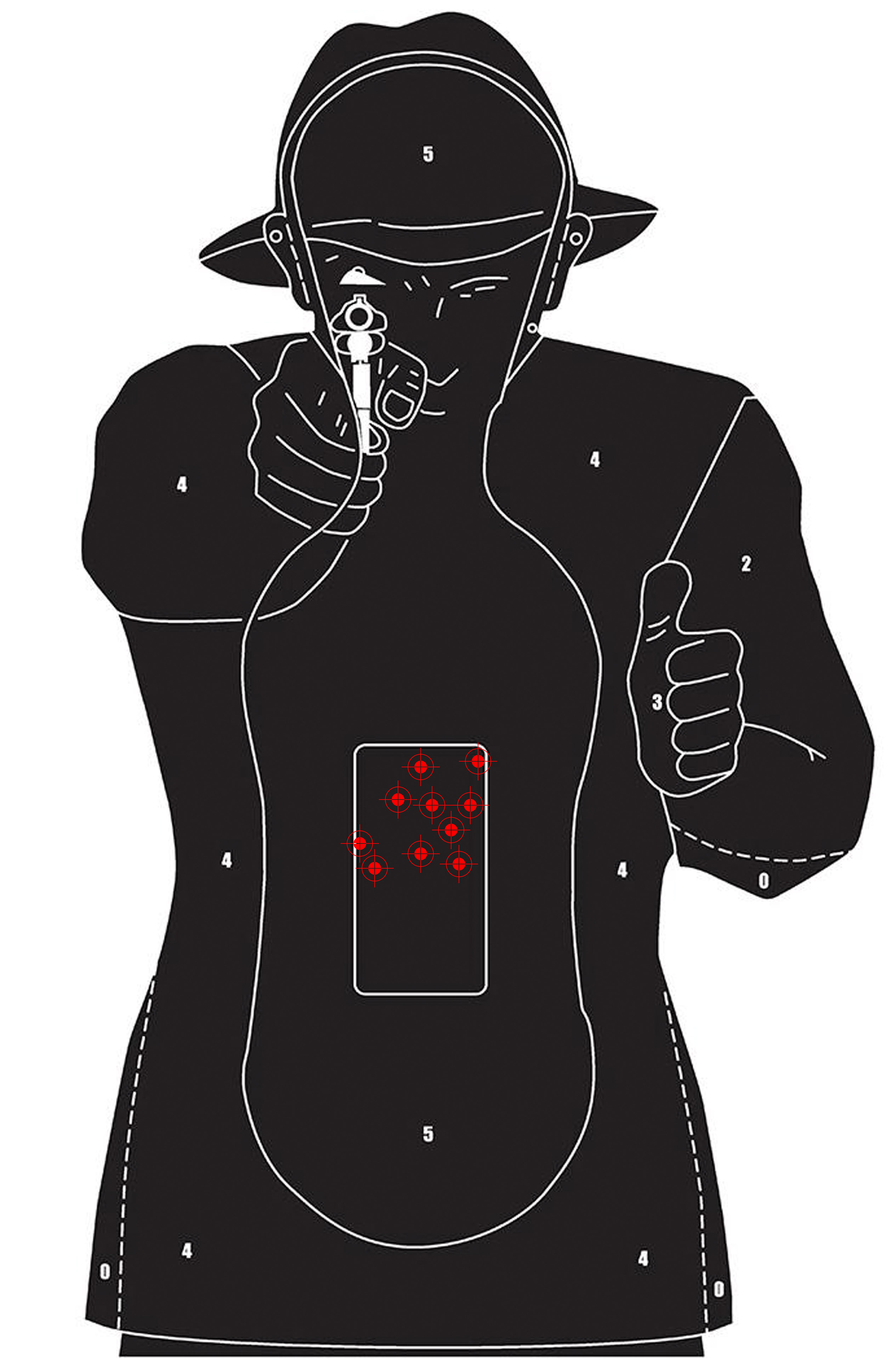
Summary
The replica is made extremely well, in the way LCT has accustomed us to for many years now. From the design side, there is nothing to pick at. Non is there from the airsoft point of view. The internal parts used by LCT are of very good quality and only few manufacturers offer replicas of such potential directly out of the box. This applies to both the replicas durability and upgrade potential. Of course, certain things can be refined and improved, such as the type and method of securing the electrical wiring.
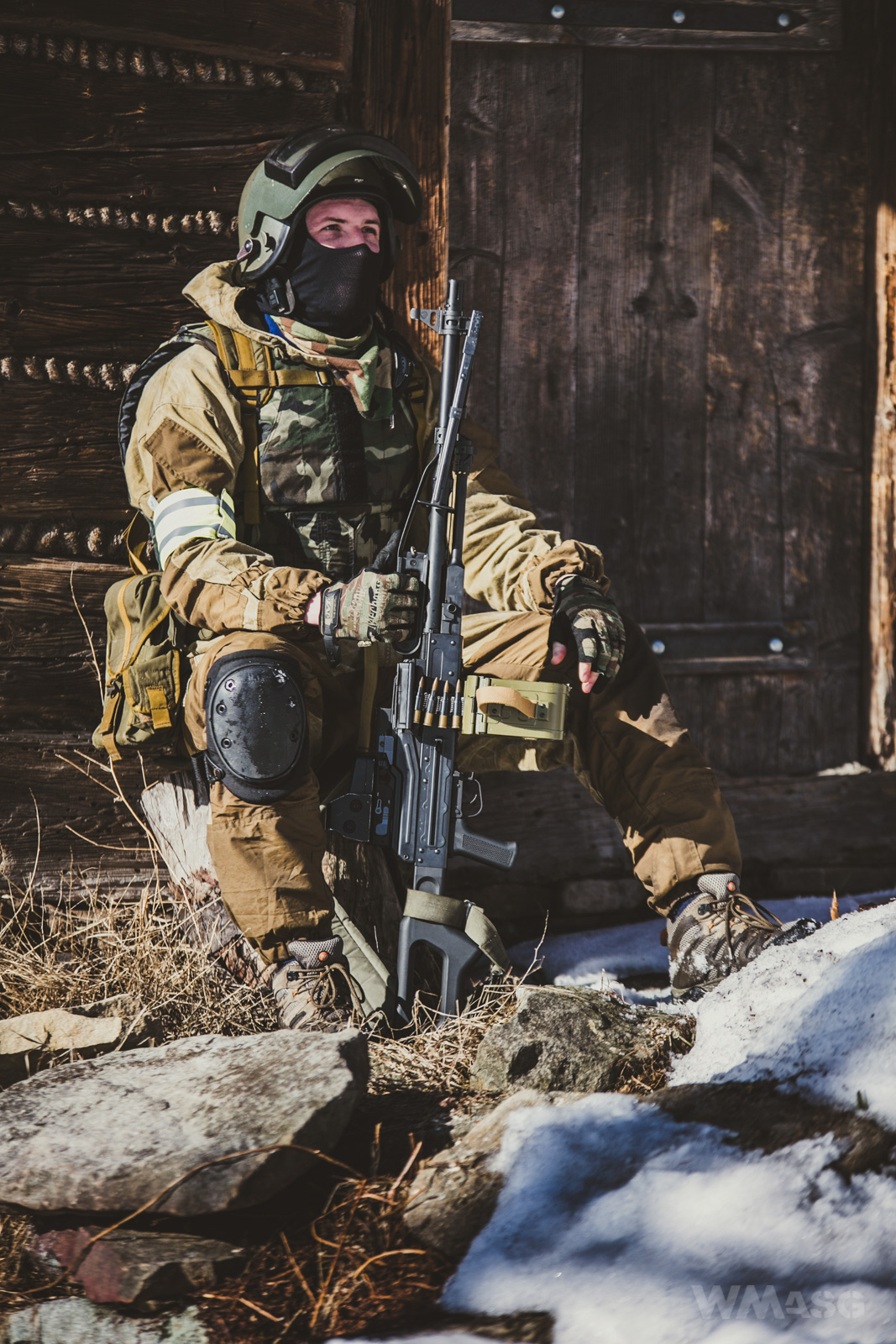
I do not feel competent to judge how faithful the replica is to the real firearm - I am not a specialist.
The A&K (PKM) and Raptor products are replicas with which the PKP can be compared. The advantage of those tow is certainly an advanced control system that allows you to adjust the rate of fire, a proven unbreakable gearbox and a clearly lower price. The disadvantage of A&K - ZnAl parts. However, for many people, it is LCT that is still a synonym of quality.
An extensive description of the PKM replica by A&K: PKM A&K
On the next page: for those interested - the technical details



